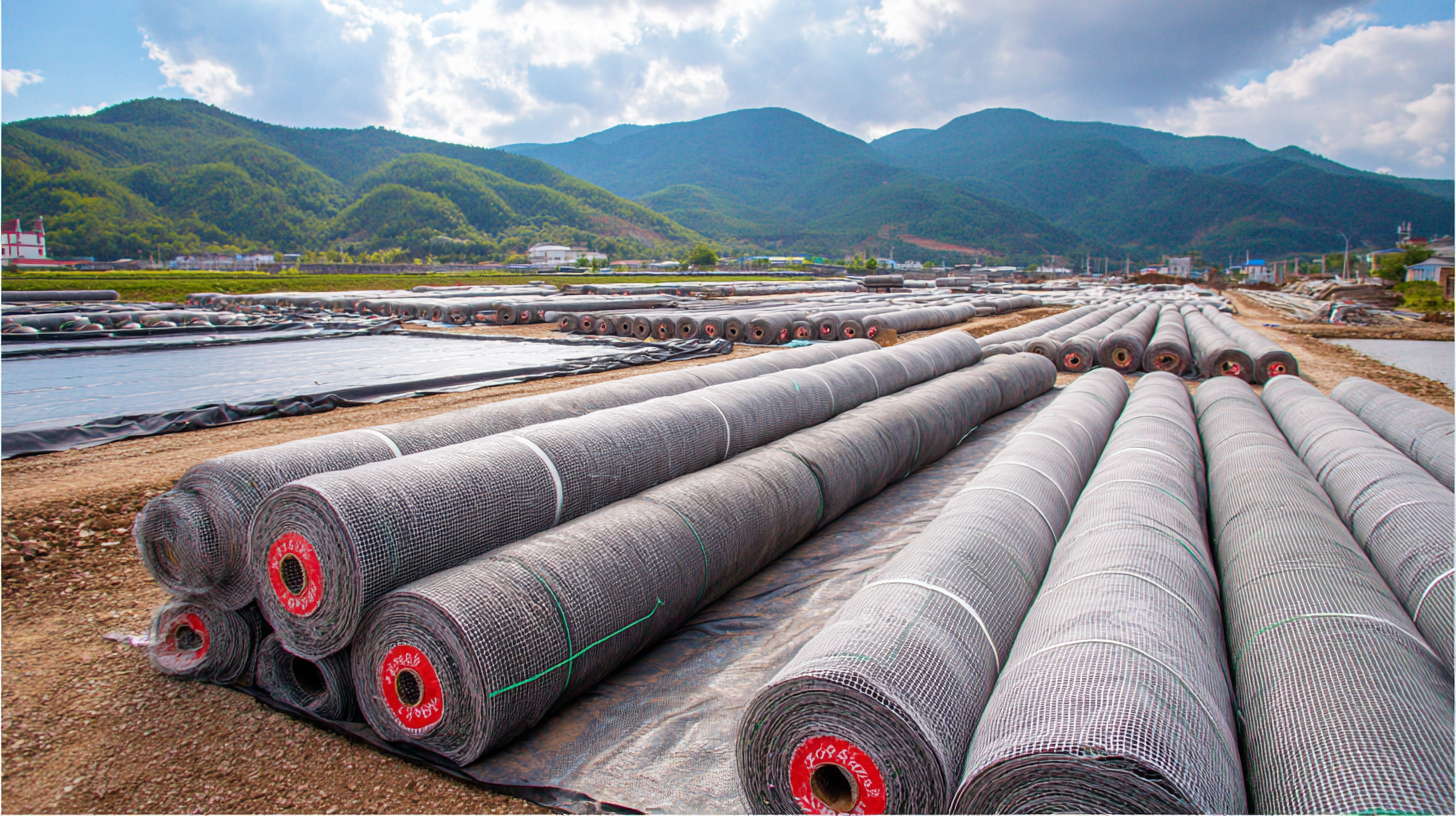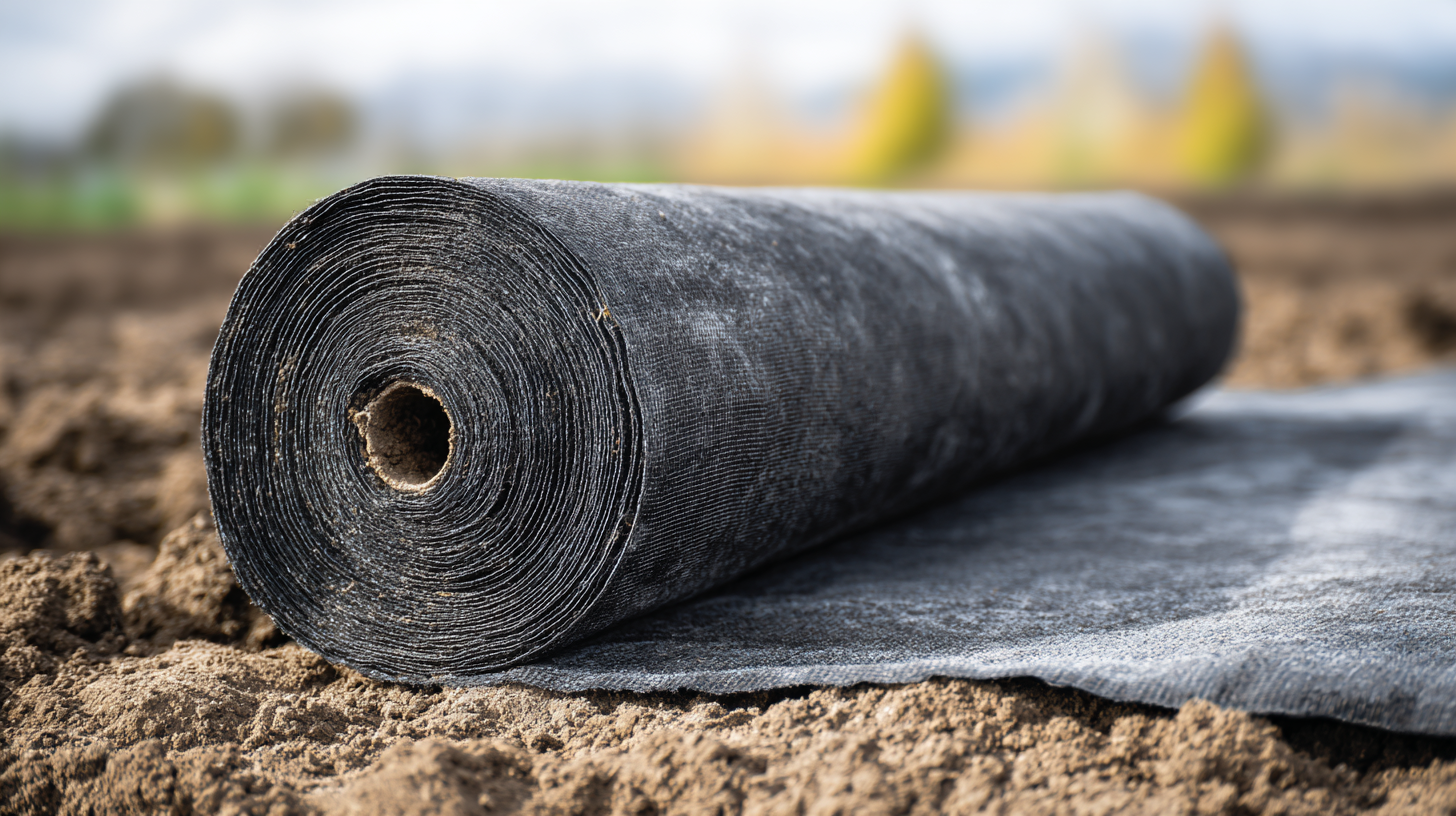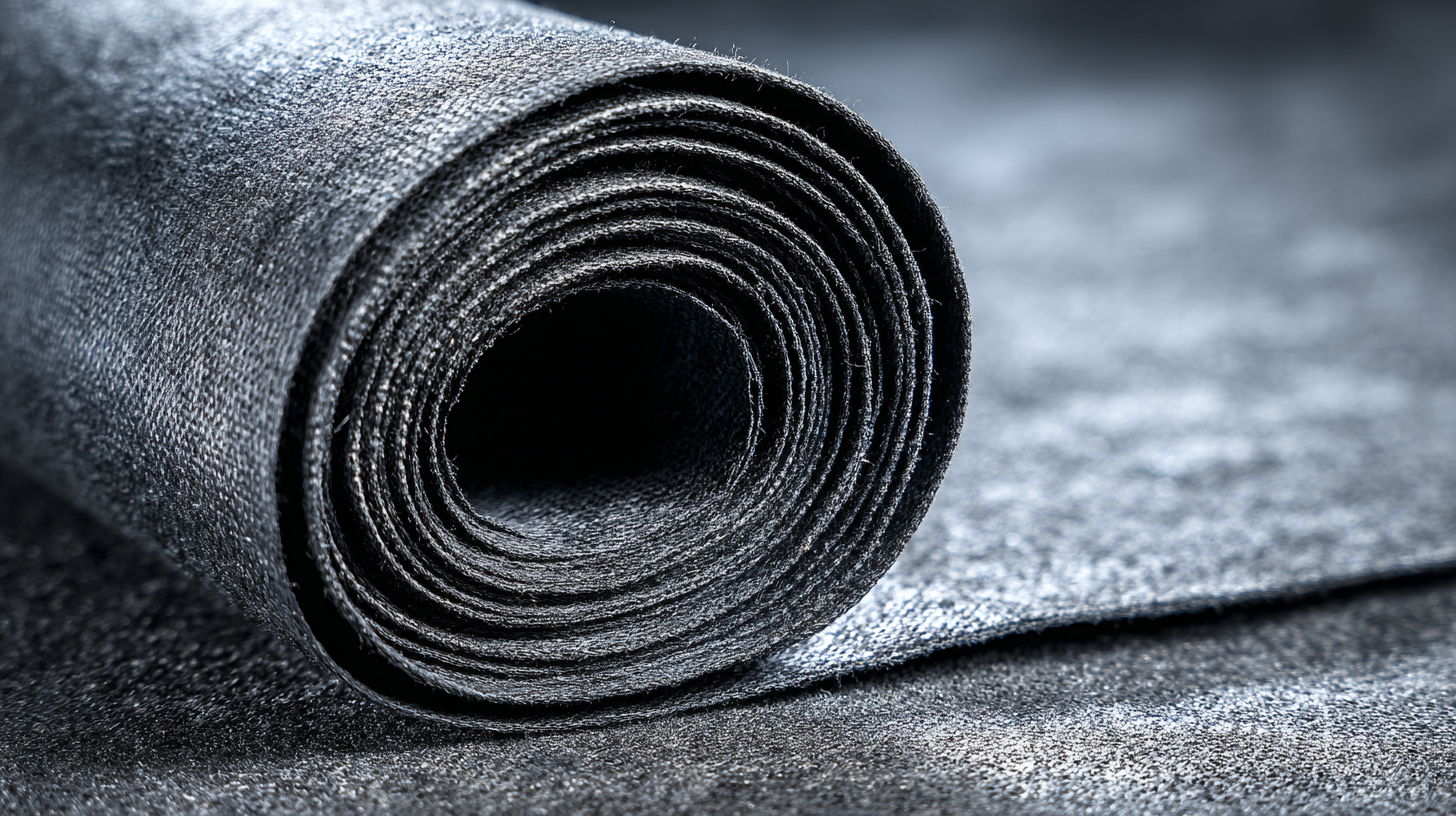Inquiry
Form loading...
- Phone
- E-mail
 In the face of escalating water management challenges, the use of Geotextile Drainage Fabric has emerged as a crucial component in innovative solutions. According to a report by MarketsandMarkets, the global geotextiles market is projected to reach $14.3 billion by 2025, driven by the increasing demand for sustainable drainage systems and erosion control. Geotextile Drainage Fabric offers not only enhanced soil stability but also effective water filtration and drainage, making it indispensable in civil engineering and environmental projects. As the industry burgeons, selecting a high-quality manufacturer becomes paramount to ensure optimal performance and sustainability in water management systems. This blog aims to guide readers on the essential criteria for choosing a top-tier manufacturer of Geotextile Drainage Fabric, ultimately paving the way for more effective and innovative water management solutions.
In the face of escalating water management challenges, the use of Geotextile Drainage Fabric has emerged as a crucial component in innovative solutions. According to a report by MarketsandMarkets, the global geotextiles market is projected to reach $14.3 billion by 2025, driven by the increasing demand for sustainable drainage systems and erosion control. Geotextile Drainage Fabric offers not only enhanced soil stability but also effective water filtration and drainage, making it indispensable in civil engineering and environmental projects. As the industry burgeons, selecting a high-quality manufacturer becomes paramount to ensure optimal performance and sustainability in water management systems. This blog aims to guide readers on the essential criteria for choosing a top-tier manufacturer of Geotextile Drainage Fabric, ultimately paving the way for more effective and innovative water management solutions.
Geotextile drainage fabric plays a crucial role in modern water management solutions, providing an efficient method for controlling soil erosion, enhancing drainage, and improving water quality. According to a report by the Geosynthetic Institute, the use of geotextiles in drainage applications can reduce erosion by up to 75%, showcasing their effectiveness in managing surface water runoff. This is particularly vital in urban areas where impervious surfaces can lead to increased flooding and waterlogging during heavy rains.
Moreover, geotextile fabrics facilitate the filtration of water while allowing for the passage of granular materials, paving the way for sustainable landscape management. A study published in the Journal of Environmental Engineering highlights that the incorporation of geotextile filters in stormwater management systems can decrease sedimentation rates by over 40%, significantly enhancing the performance of drainage systems. By optimizing water flow and reducing turbulence, these fabrics not only stabilize soil structures but also prevent the contamination of groundwater, underscoring their invaluable contribution to sustainable water resource management.
This chart illustrates the effectiveness of various geotextile drainage fabrics in terms of water retention capacity (in liters) and permeability rate (in liters per square meter per second). The data highlights the innovative solutions available for effective water management.
When it comes to effective water management, selecting high-performance geotextile fabrics for drainage purposes is paramount. These specialized fabrics are designed to enhance water flow while preventing soil erosion and contamination. Key technical parameters play a crucial role in evaluating the effectiveness of these materials.

One essential parameter is the permeability of the geotextile, which influences how quickly water can pass through the fabric while maintaining soil stability. Additionally, the tensile strength of the fabric ensures it can withstand the mechanical stresses during installation and over time. The thickness and specific weight are also critical, as they contribute to the durability and performance of the geotextile under varying environmental conditions.
Understanding these technical specifications enables engineers and project managers to make informed decisions when selecting geotextile drainage fabrics. By focusing on these parameters, they can optimize drainage solutions that are not only effective but also sustainable, reducing the long-term impact on the surrounding ecosystem. Emphasizing innovation in these materials will pave the way for more efficient water management strategies in diverse applications.
When it comes to effective water management, selecting the right geotextile materials can significantly influence the outcome of drainage systems. A comparative analysis of various geotextiles reveals that woven fabrics, which are commonly used for their strength and durability, provide optimal water control in heavy load-bearing applications. According to a study by the Geosynthetic Institute, woven geotextiles can experience tensile strengths exceeding 100 kN/m, making them ideal for stabilizing soil and managing excess water effectively.
In contrast, non-woven geotextiles offer remarkable filtration characteristics, which are essential for preventing soil erosion while allowing water to flow through. Reports show that non-woven fabrics can retain up to 3,000 liters of water per square meter before reaching saturation, which is crucial during heavy rainfall. This capacity enables them to manage water more efficiently in both urban and agricultural contexts, providing an effective barrier against contaminants while promoting soil health. By identifying the specific needs of a project, engineers can leverage the unique properties of each geotextile type to enhance overall water management strategies.
Geotextile drainage fabrics are revolutionizing water management strategies across various environmental conditions. Recent studies highlight their effectiveness in enhancing drainage, improving soil stability, and mitigating erosion, especially in saturated and unsaturated states. For instance, research indicates that wicking geotextiles can significantly reduce water content in road bases, making them an ideal solution for permeable sidewalks. With the global market for biodegradable geotextiles projected to grow to around USD 32 billion by 2033, it is evident that innovations in this field are responding to the increasing demand for sustainable practices.
**Tips:** When selecting geotextile fabrics, consider their composition—opt for materials that align with the environmental conditions of your project. Additionally, biodegradable options can provide both performance benefits and a reduced ecological footprint.
Furthermore, the application of innovative geotextile solutions extends beyond traditional methods. The introduction of geotextile ropes fashioned from recycled textile waste highlights a creative approach to anti-erosion measures. These advancements not only promote resource efficiency but also align with the industry's shift towards eco-friendly materials. As the biodegradable textiles market continues to expand, incorporating these innovations can lead to effective water management and enhanced environmental resilience.
**Tips:** Always evaluate the specific drainage and reinforcement needs of your project when choosing geotextile materials, ensuring optimal performance in varying conditions.
| Application Area | Geotextile Type | Environmental Condition | Drainage Efficiency (%) | Reinforcement Characteristics | Durability (years) |
|---|---|---|---|---|---|
| Landfills | Non-woven | Wetlands | 90 | High tensile strength | 15 |
| Road Construction | Woven | Variable terrain | 85 | Excellent stability | 20 |
| Agricultural Drainage | Bicomponent | Flood-prone areas | 95 | Good water retention | 10 |
| Erosion Control | Composite | Coastal areas | 80 | Resistance to UV | 25 |
| Construction Sites | Thin Film | Congested urban | 78 | Lightweight and portable | 5 |
Geotextile drainage solutions are increasingly recognized for their longevity and sustainability in modern water management systems. Composed primarily of polymers such as polyolefin, polyester, or polyamide, these materials have garnered attention due to their dual role in enhancing drainage and addressing soil pollution risks. The integration of geotextiles in infrastructure not only bolsters the stability of weak soils but also provides an effective means of soil retention and erosion protection. These properties make geotextiles an indispensable tool in geotechnical engineering applications, along with their eco-friendly construction benefits.

Recent advancements in geotextile technology have led to the development of innovative solutions such as vegetation-wicking geotextiles. These materials have shown remarkable efficacy in managing water content within road bases, both in saturated and unsaturated conditions. By effectively reducing moisture levels, these geotextiles help prevent deterioration of the underlying structure, ultimately extending its lifespan while promoting sustainable water management practices. The continuous evolution of geotextiles drives their widespread application, paving the way for more resilient and environmentally conscious construction projects.
